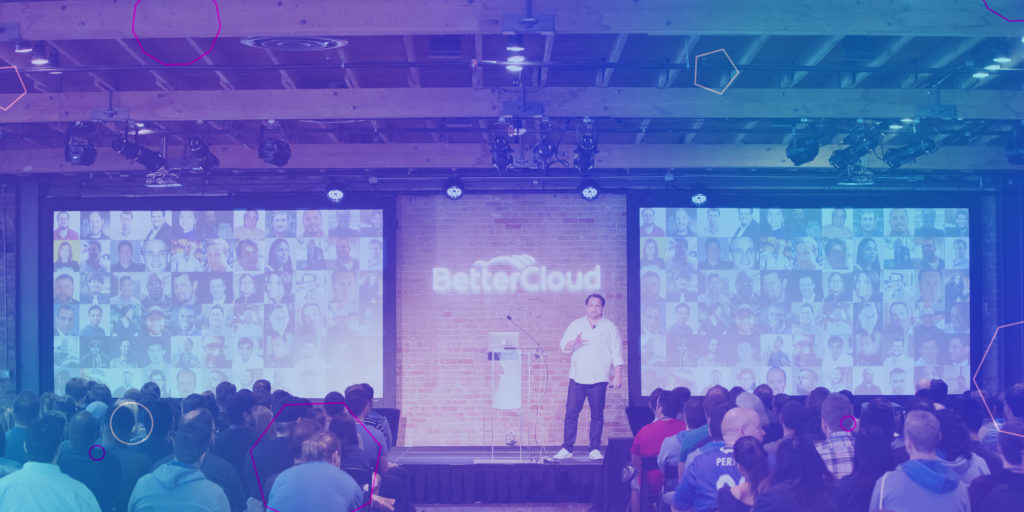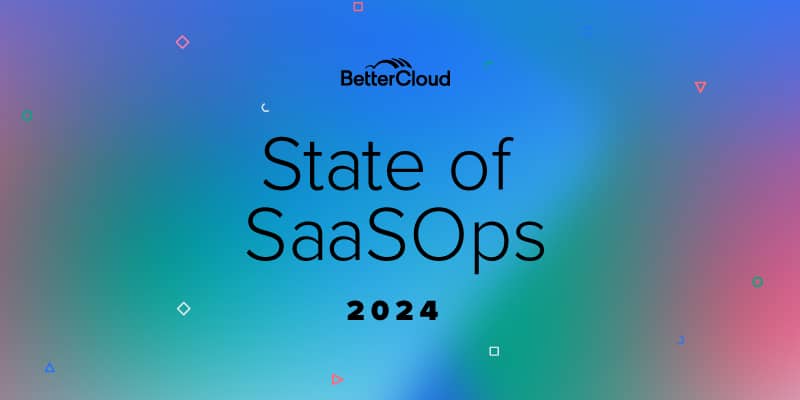HR and IT: 3 Must-Have Tactics to Work and Adapt Faster
October 10, 2017
4 minute read

This is the second post in our HR and IT series (co-produced by Namely and BetterCloud). Click here to read the first post in the series, which provides strategies for getting the budget and executive buy-in you need to streamline HR and IT operations.
Once upon a time, the working world was comprised of only two types of workers: full-time and part-time. Each one operated in fixed departmental silos.
The modern workforce is now a chaotic combination of full- and part-time employees, consultants, contractors, freelancers, permalancers, and many other contributors. Operationally, they expect to collaborate seamlessly using SaaS apps, regardless of whether they are in-office, remote, hybrid, or mobile and field employees.
This is the modern workplace. And for HR and IT, this change has also coincided with increased expectations. Employees expect better support, faster. They expect to get up and running in minutes not hours–and rightly so.
These escalating expectations and new technologies, while great for the everyday employee, are forcing HR and IT to adapt and work much closer together. It’s a challenge, sure, but an opportunity equally so.
Ad Hoc On- and Offboarding: Less Time, Higher Stakes
Here’s an increasingly common scenario: An executive makes an ad hoc onboarding request mid-afternoon on a Friday.
For HR and IT, this means scrapping weekend plans and preparing the hardware, application licenses, accounts, access cards, and all other necessities for an 8:30 AM onboarding the following Monday morning.
Even with the necessary physical resources, and relatively streamlined commissioning processes, that’s still time-consuming work. But what’s the alternative? If this onboarding doesn’t take place, a very expensive team of consultants may sit around Monday morning waiting for the necessary tools to start their work.
And the costs and risks are even greater on the opposite end of the personnel process. IT and HR must have procedures in place to effectively deal with an ad hoc offboarding. An exiting employee with a grudge who retains remote access to any application or data can cause extensive financial and reputational damage.
If your on- and offboarding windows are shrinking, or if the processes are becoming less predictable or uniform, then you need resources to respond accordingly.
The three following tactics will be extremely helpful:
Automation: Work Faster with More Consistency
Aside from fashioning an expanded resource pool, creating easy and repeatable processes that can be triggered quickly and/or automatically is the primary way to address increased complexity and shorter response times.
Automation dramatically speeds up the on- and offboarding process. Tools like BetterCloud are built to connect HR, communication, and service desk tools like Namely, G Suite, Slack, and Zendesk to reduce the manual intervention required to create alerts, manage workflows, centralize information capture, and create audit trails.
If you have these tools but haven’t deployed any automated workflows, start with something simple. Automations can become very complex, especially in larger organizations. Build out a minimal viable product (MVP) to get the basics right.
You don’t want to map out all the possible permutations, pulling in all parts of the User Lifecycle Management (ULM) process, only for it to change by the time you’ve completed it. Remember, automating 20 percent of a 10-hour process is still two hours saved.
Define a process, build it in a workflow tool like BetterCloud, and then deploy it and iterate.
Delegation: Put the Right Tools in the Right Hands
It’s a common misconception that every ULM process related to hardware or software belongs to IT. With proper tools and training, HR can easily take care of many ULM tasks.
Now, with products like BetterCloud and Namely, organizations can actually enable their HR teams to kick off automated workflows without risk. For example, when HR creates a new employee in Namely, BetterCloud can create a corresponding Google, Slack, and Dropbox account for that user–and even email the IT admin to notify them.
IT teams often keep HR away from Active Directory (AD), Okta, or other identity providers due to the system’s criticality. However, with the appropriate instruction and auditing, non-IT staff can easily handle simple technical tasks.
Financing: Allocate Budget for the Unexpected
Budgets may seem like a minor point, but they have the potential to wreak havoc on onboarding.
Typically, a few months before the year end, organizations allocate budget to departments for the coming year. It takes many weeks of planning, researching, and haggling to get to this point.
Contributing to this budget are the estimated headcount numbers (new hires, reductions, change in composition, new ventures, etc.), which are provided by each department to finance and then fed to IT. Estimates, though, are just that. Some business units vary considerably, effectively running out of cash by mid-year. Negotiating for additional budget when you have 36 hours to find four new laptops and six new Office 365 or G Suite licenses is not what you want to be doing on a Friday afternoon.
To avoid this, agree on a process with the finance team to work through this inevitability before it arises. Equally as valuable, if you can agree with your supplier to keep certain types of frequently purchased hardware or software in stock for those emergency, next-day purchases, it can be a real boon.
Today, with more technology entering the hands of HR and other employees, IT must adapt to automate and delegate critical tasks. Otherwise, HR and IT will stumble over one another as they struggle to deal with shorter execution windows and rising expectations.
About the Author
 Gavin Whatrup (@gwhatrup) started out helping people do innovative things with data. Nearly 30 years later, he’s now helping organizations protect that data, take advantage of cloud-based opportunities, and reimagine the role IT can play in the new age. An early adopter of virtualization and hybrid cloud, Gavin recently managed the migration of his organization to Office 365, across 12 companies and 1,000 users. From small data analysis company, via marketing start-up, media, and advertising agencies to marketing communications group, Gavin has tracked the rise and rise of IT as a core corporate function, which at its heart is a people-based service, doing amazing things on a daily basis.
Gavin Whatrup (@gwhatrup) started out helping people do innovative things with data. Nearly 30 years later, he’s now helping organizations protect that data, take advantage of cloud-based opportunities, and reimagine the role IT can play in the new age. An early adopter of virtualization and hybrid cloud, Gavin recently managed the migration of his organization to Office 365, across 12 companies and 1,000 users. From small data analysis company, via marketing start-up, media, and advertising agencies to marketing communications group, Gavin has tracked the rise and rise of IT as a core corporate function, which at its heart is a people-based service, doing amazing things on a daily basis.






